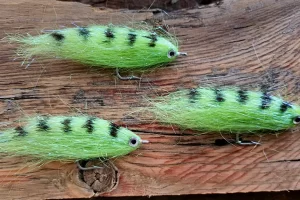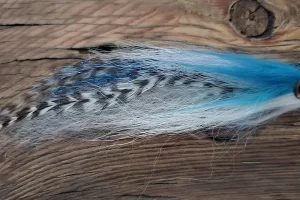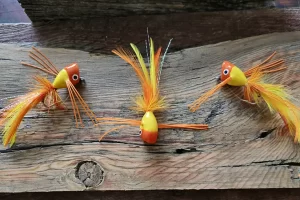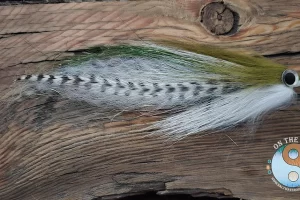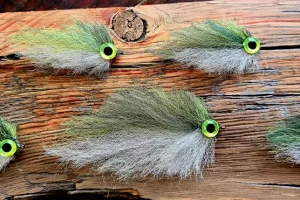Minnesota’s Top 10 Musky Fly Fishing Lakes: Our Guide
So, you’re thinking about chasing muskies with a fly rod in Minnesota? Good. It is not for the faint of heart, that much is true. These fish earned their nickname, “the fish of 10,000 casts,” honestly.
But landing one on the fly… that’s an experience you won’t forget. It takes patience, the right gear, and knowing where to go. You’ve come to the right place to figure out Minnesota’s 10 Best Musky Fly Fishing Lakes and How to fish them.
Minnesota truly is a special place for this pursuit. Forget delicate trout sips; this is about big flies, heavy tackle, and predators that attack with serious intent. We’re talking about a different kind of fly fishing elegance, a true `fisherman throwback` to targeting apex predators.
Getting ready to explore Minnesota’s 10 Best Musky Fly Fishing Lakes and How to fish them means preparing for a true angling adventure. Many `fly anglers` find this challenge highly rewarding.
Table of Contents
Understanding the Minnesota Musky
The muskellunge, or *Esox masquinongy*, sits proudly at the top of the aquatic food chain in its native waters. Their name supposedly comes from the Ojibwe word *maashkinoozhe*, meaning “ugly pike,” though many anglers find their power and presence impressive. These fish are ambush predators, built for explosive bursts of speed to capture prey.
Minnesota is fortunate to have native musky populations in several major watersheds, including the `Mississippi River`, St. Croix, and Big Fork rivers. The state’s Department of Natural Resources actively manages numerous lakes to support healthy `muskie fishing` populations, including stocking programs featuring the fast-growing Leech Lake strain. In fact, the Minnesota DNR manages 99 lakes for muskies, offering plenty of opportunities across the state, often with good `public access`.
Muskies are known for their size, sometimes reaching lengths over 50 inches and weights exceeding 30, 40, or even 50 pounds in fertile waters. They primarily feed on `fish species` like suckers, ciscoes, and perch, but won’t shy away from frogs, birds, or small mammals if the opportunity arises. This predatory nature makes them a prime target for big, suggestive fly patterns, much larger than a `Phat Azz Hopper`.
Why Fly Fish for Musky?
Fly fishing for these toothy giants is definitely a niche within a niche, but its popularity is growing among dedicated `fly fisherman` communities. Why choose a `fly rod` when conventional gear exists? For many, it is about the heightened challenge and the direct connection felt during the `fly cast`, retrieve, and especially the strike.
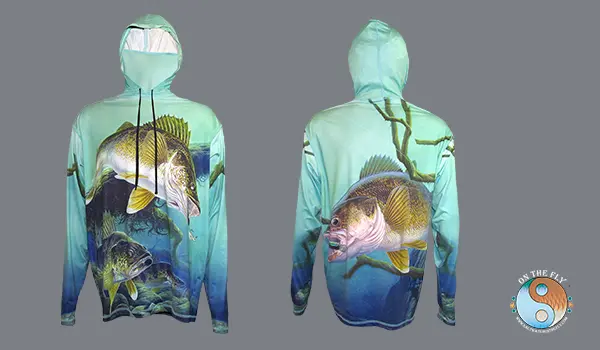
Walleye Graphic Fishing Hoodie
Minnesota Musky Fly Fishing can be cold, windy, one moment, and hot direct sun the next moment. Layering is the best approach for the elements of Minnesota. A light weight Graphic Fishing Hoodie for base and outer layer, with a UPF-50 sun protection and sewn in facemask.
Our Hydrophobic Heavy Weight Quarter Zip Graphic Hoodie is the perfect outer layer for spring and fall days or even a windy summer day.

Tranquility Graphic Rainbow Trout Heavy Weight Hoodie
Baja California Mexico to Montana their is a emesis amount of fly fishing. Baja Rooster Fish, Mahi Mahi, as you travel inland bass, trout, carp, catfish, pike, musky and even gar. Make Central Montana your Vacation Basecamp.
There is something visceral about watching a four-foot shadow emerge from the depths to inspect or engulf a fly you’re manipulating inches from the surface or just below. It requires focus and technique, pushing the boundaries of traditional `fly fishing` practices. It is not just about catching `big fish`; it is about the hunt and the encounter.
Improvements in gear have also made this more feasible, as documented in many fishing magazines available as a `single issue` or via `digital access`. Heavier fly rods, specialized `fly lines/leaders/tippets`, and innovative `fly tying` techniques allow anglers to present large offerings effectively and battle these powerful fish. The news of record catches, like the 57-incher landed on Mille Lacs with a fly, further fuels interest among both dedicated fly anglers and curious conventional fishermen, reminding us that pioneers like `Lefty Kreh` or `Joan Wulff` expanded the horizons of what a fly rod could do.
Essential Gear for the Minnesota Musky Fly Angler
Tackling `Minnesota muskie` on the fly demands gear that can handle casting large, air-resistant flies and stopping powerful fish. Think less about finesse and more about functional power. Skimping here often leads to frustration and lost opportunities.
Rods
A 9-foot `fly rod` in the 8-weight or 9-weight class is generally considered the minimum starting point. Many serious musky anglers prefer 10-weight or even heavier rods, up to 12-weights, especially when throwing the largest flies or fishing heavy cover. The rod needs backbone, often a fast action, to perform a good `fly cast` with cumbersome flies and exert pressure during the fight, a concept important in `functional fly casting`.
Reels
Your reel needs to balance the rod and, more importantly, have a reliable drag system. While muskies are not known for long, scorching runs like some saltwater species, a smooth drag protects your tippet during powerful head shakes and short bursts. Sufficient backing capacity (200 yards of 30lb Dacron is standard) is also a good idea, just in case.
Large arbor designs help with line pick-up rate, which can be important when a fish charges the boat. Consider reels known for durability and strong drags. Even though not saltwater fishing, the constant casting of heavy lines puts stress on a reel.
Lines
Weight-forward floating lines are standard for surface or near-surface presentations with poppers or unweighted streamers. But muskies often hold deeper, especially mid-day or along drop-offs. Intermediate lines, sink-tip lines (like Type 3 or Type 5 sink rates), or full-sinking lines become necessary to get your fly into the strike zone near weed edges or submerged structure.
Look for lines with aggressive front tapers designed to turn over big, wind-resistant flies. Match the line weight to your rod for optimal `fly casting` performance. Many `fly lines/leaders/tippets` manufacturers offer musky-specific tapers.
Leaders and Tippet
Leaders for musky need to turn over large flies and withstand abrasion. Typically, a short, stout leader of 4 to 7 feet is used, often built with a stiff butt section (e.g., 60lb mono) tapering down to maybe 30- or 40-pound test class tippet material before the bite guard. The critical component is the `bite tippet`.
Muskies have serious teeth that will slice through standard monofilament or fluorocarbon. A wire leader (single strand or knottable wire like Rio’s Wire Bite or Malin Boa) or heavy-duty fluorocarbon (80-100lb test) section of 12-18 inches is essential to prevent bite-offs. Ensure your knots connecting the bite tippet are strong and reliable.
Flies
Think big; this is not like casting a `lil bit` midge pattern. Musky flies often range from 4 to 12 inches, sometimes even longer. Large, articulated streamers that mimic baitfish like suckers, perch, or ciscoes are staples, often incorporating designs from `influential anglers` like `Blane Chocklett`.
Materials like bucktail, synthetics (like Flashabou or Craft Fur), marabou, and flash create bulk, movement, and sometimes a profile that pushes water like a `Mess Maker`. Popular patterns include variations of Deceivers, articulated beast flies (Game Changers), Bufords, and Hollow Fleyes. Work at the `fly tier’s bench` is crucial for dedicated anglers.
Topwater patterns like poppers and sliders can also be incredibly effective, especially during low-light periods. Don’t neglect patterns that suggest other food sources like frogs or even small birds. Many dedicated musky anglers, much like the famous `fly tier` `Dave Whitlock` or `Gary LaFontaine` in their time, spend hours at the `fly tier’s` station crafting these large creations, sometimes drawing inspiration from classic `fisherman throwback` patterns but adapting them with modern materials.
Poppers & Baitfish Patterns for Musky Fly Fishing
- Musky / Bass Popper Green Black Striped
- Chartreuse Black Striped Baitfish
- Blue White Secret
- Musky, Pike, Bass, Trout, Mahi Mahi to Tarpon and more. Chartreuse-Pink EP Baitfish
Musky, Pike, and Bass Flies for success on Minnesota’s waters.
| Fly Type | Description | When to Use |
|---|---|---|
| Articulated Streamers | Large, multi-section flies imitating baitfish (suckers, perch, ciscoes). Excellent swimming action. | General searching, covering water, subsurface presentations. |
| Bucktail Flies (e.g., Buford) | Large profile flies often using deer hair for bulk and push water. | Good for stained water or creating disturbance. |
| Topwater Poppers/Sliders | Surface flies designed to make noise and commotion. | Low-light periods (dawn/dusk), calm conditions, fishing over weeds. |
| Synthetic Baitfish | Use synthetic materials for durability, flash, and neutral buoyancy/sinking properties. | Clear water situations, mimicking specific forage. |
| Creature/Amphibian Patterns | Imitate frogs, rodents, or even small birds. | Specific situations, near shorelines, lily pads, or overhanging trees. |
| Fly Type | Description | When to Use |
|---|---|---|
| Articulated Streamers | Large, multi-section flies imitating baitfish (suckers, perch, ciscoes). Excellent swimming action. | General searching, covering water, subsurface presentations. |
| Bucktail Flies (e.g., Buford) | Large profile flies often using deer hair for bulk and push water. | Good for stained water or creating disturbance. |
| Topwater Poppers/Sliders | Surface flies designed to make noise and commotion. | Low-light periods (dawn/dusk), calm conditions, fishing over weeds. |
| Synthetic Baitfish | Use synthetic materials for durability, flash, and neutral buoyancy/sinking properties. | Clear water situations, mimicking specific forage. |
| Creature/Amphibian Patterns | Imitate frogs, rodents, or even small birds. | Specific situations, near shorelines, lily pads, or overhanging trees. |
Key Techniques for Musky Fly Fishing Success
Presenting the fly effectively and converting follows into strikes separates successful musky fly anglers from those just getting casting practice. It often involves aggressive tactics quite different from traditional trout fishing. Remember, patience is vital; it is often called the fish of 10,000 casts for a reason, a challenge relished by any serious `fly fisherman`.
Casting Big Flies
Forget delicate loops; proper `fly casting` form is crucial. Casting large, air-resistant musky flies requires modifications to standard techniques. Techniques like the Belgian cast (oval cast) or elliptical cast help manage heavy flies and prevent collisions with the `fly rod`, reducing the chance of tangles or rod breakage.
Efficient `functional fly casting`, perhaps incorporating ideas from `Jaworowski’s functional fly casting`, focuses on smoothly accelerating the heavy line and fly, using fewer false casts to reduce fatigue and keep the fly in the water longer. Hauling techniques (single or double haul) are essential for generating line speed. Practice is key to achieving distance and accuracy without excessive effort.
Retrieves
Experimentation is vital, but generally, fast and erratic retrieves trigger predatory responses from muskies. Mix short, quick strips with pauses or long pulls. The goal is often to imitate wounded or fleeing prey, creating the impression of an easy meal.
Vary your retrieve speed and cadence frequently until you find what the fish respond to on that particular day. Always maintain contact with your line to detect subtle takes, which can sometimes feel like just a slight heaviness or ticking sensation. A quality `fly angler` pays constant attention.
The Figure-Eight
Muskies are notorious followers; they often trail a fly right to the boat without committing. Executing a large figure-eight pattern with your rod tip in the water at the end of your retrieve can convert these follows into boat-side strikes. This is arguably one of the most critical techniques for consistent success.
Keep the fly moving smoothly in wide, sweeping turns and change direction sharply at the turns; this change of direction and speed is often when a following musky decides to eat. Extend the figure-eight several feet down into the water, not just at the surface. Many `influential anglers` like `Landon Mayer` emphasize mastering this technique.
Dealing with Follows
If you see a musky tracking your fly, try not to panic or slow down your retrieve prematurely. Often, increasing the speed and erraticness of your retrieve can trigger an aggression strike before the fish reaches the boat. The figure-eight is your final, crucial chance if it follows all the way in.
Pay attention to the fish’s body language. If it stays deep and follows slowly, a pause or change in direction might work. If it charges in hot, keep the fly moving fast right into the figure-eight.
Hook Setting
Forget the gentle trout set (lifting the rod tip high). Muskies have bony mouths that require significant force to penetrate. Use a firm strip set: point the `fly rod` tip directly at the fish and pull hard and continuously on the `fly line` with your stripping hand, multiple times if necessary.
Keep pulling until you feel the hook solidly connect. Only then should you lift the rod to begin fighting the fish. A weak hookset is a primary reason for losing muskies shortly after the strike.
Minnesota’s 10 Best Musky Fly Fishing Lakes and How to fish them
Alright, let’s get to the specifics. Minnesota boasts incredible `muskie fishing` water, but these lakes consistently rank among the best for fly anglers seeking that trophy encounter. Remember that `Minnesota fishing` requires adapting to conditions on any given day; consult local reports or perhaps even a `bass guide` who fishes the same waters for current conditions.
Buford's, Baitfish, Poppers, to Hook Musky on a Fly
- A great Musky Seducer a Buford
- Red Yellow Musky /Bass Popper
- Olive White Secret
- Bull Frog EP Minnow
.
1. Lake Vermilion
Why It’s Great: This sprawling shield lake in northern Minnesota is renowned for its clear water, stunning scenery, and potential for truly giant muskies often topping 50 inches. Its complex structure includes islands, deep basins, rocky reefs, points, and weedy bays – perfect musky habitat offering varied challenges for the `fly fisherman`. Good `public access` is available.
How to Fish It: Focus on submerged rock piles and the edges of expansive weed beds, especially cabbage. Large streamer patterns mimicking ciscoes or perch are effective. Given the clarity, sight fishing opportunities exist in shallower bays, especially early or late in the season.
Use sinking lines (intermediate to type 3) or weighted flies to probe deeper structure effectively along drop-offs near islands or main-lake points. Covering water methodically is key on this large lake; utilize quality electronics to find promising structure. Dawn and dusk periods are often prime time.
2. Leech Lake
Why It’s Great: Leech Lake is legendary in the musky world, a centerpiece of `Minnesota fishing`. It’s a vast fishery (Minnesota’s third-largest lake) known for producing both numbers and size of `Minnesota muskie`. Its expansive weed flats, particularly cabbage beds, and numerous rock reefs hold significant populations.
How to Fish It: Given the extensive vegetation, weedless fly patterns or flies tied with weed guards are a smart choice. Large, articulated streamers in natural colors (perch, walleye, cisco) work well. A boat is almost essential here to cover ground and effectively fish key structures like the main lake reefs (Submarine Island, Annex, Mokey Reef) and large cabbage beds in Walker Bay or Portage Bay.
Target edges, pockets, and inside turns within the weeds, especially where weeds meet harder bottom or rock structure. Don’t neglect shallow sand flats adjacent to deep water early and late in the day. Windblown shorelines and points often concentrate baitfish and muskies.
3. Mille Lacs Lake
Why It’s Great: Simply put, Mille Lacs grows giants and is a top destination for catching `big fish`. It produced the previous fly-caught world record and consistently yields some of the largest muskies in the state. Its relatively shallow basin features clear water, abundant cabbage beds, gravel bars, and extensive rock reefs, creating superb habitat.
How to Fish It: Large flies are the name of the game here; think 10-12 inch articulated patterns to tempt the biggest fish. Sight fishing is a distinct possibility over shallow rocks (like Seven Mile Reef or Hennepin Island) and weeds due to the water clarity. Concentrate efforts around expansive cabbage flats and rock reefs during prime feeding windows, often associated with low-light conditions or moon phases (major/minor periods).
Be prepared for heavy boat traffic, especially on weekends. Employing precise boat control to work structure thoroughly is critical. Wind can significantly impact boat handling and fishing conditions on this large, open lake.
4. Lake Minnetonka
Why It’s Great: Located right in the `Twin Cities` metro area, Minnetonka offers surprising accessibility and a robust musky fishery. Despite heavy recreational use, it holds good numbers of fish, including some trophies, making it great for local `fly anglers`. Multiple `public access` points are available.
How to Fish It: Fishing pressure is a factor, so target low-light periods (early morning/late evening) or weekdays if possible. Topwater flies like poppers and walkers can excel here, drawing fish up through the milfoil and coontail weeds. Focus on deeper weed edges (12-18 feet), inside turns on points, and channel edges away from main boat traffic.
Stealth and accurate casts are beneficial, especially in calmer conditions. Consider darker or natural fly colors in the clearer water sections. Knowledge of lake structure from `travel guides` or maps is helpful.
5. Cass Lake
Why It’s Great: Part of the Leech Lake chain, Cass offers diverse structure including deep holes (over 100 feet), prominent points dropping into deep water (like Star Island), saddles between islands, and healthy weed beds. It has a solid reputation for producing large muskies and offers classic northern Minnesota scenery.
How to Fish It: Fish main lake points, saddles between islands (like Cedar Island and Star Island), and sharp breaks near deep water access. Large streamers imitating perch or tullibees work well. The clearer water sections can offer sight fishing potential near sand flats or shallow weeds early in the season.
Experiment with retrieve speeds; sometimes a pause or erratic jerk triggers fish holding on structure. Utilizing intermediate or sink-tip lines helps cover the mid-depth zones effectively. Don’t overlook the connection to Pike Bay, which offers different structure.
6. Lake Winnibigoshish (Big Winnie)
Why It’s Great: “Big Winnie” is another historical giant factory, holding the state record for many years (though not caught on a fly). It’s known for its classic main-lake bars and reefs that rise abruptly out of deeper water, attracting baitfish and predatory muskies. It provides a classic `Minnesota fishing` experience.
How to Fish It: Focus your efforts on the numerous mid-lake bars and reefs (like Bena Bar, Sugar Bar, Muskie Bar, Center Bar). Getting flies down deep (10-25 feet) is often necessary. Use heavy flies paired with sinking or sink-tip lines (Type 3 to Type 6).
Slow, deliberate retrieves near the bottom structure, occasionally banging the rocks, can entice fish holding deep. This often requires patience and precise boat control using GPS and sonar. Wind is a major factor on Winnie; calmer days allow for better presentation on offshore structure.
7. Mantrap Lake
Why It’s Great: If you seek a more intimate, less pressured musky experience, Mantrap is an excellent choice. This smaller, highly complex lake features numerous arms, bays, points, and islands with clear water and healthy weed growth (cabbage, coontail). It has a good musky population known for respectable average size, offering a quality `fly fishing` experience.
How to Fish It: Target deep weed edges (15-20 feet), points extending into the main basin, and transitions between weed types or where weeds meet sand/rock. Since it’s smaller with clear water, muskies might be accustomed to slightly smaller forage or be more boat-shy. While large flies still work, consider downsizing slightly (6-8 inches) or trying patterns imitating frogs or smaller baitfish common in the lake.
Dawn and dusk periods can be especially productive due to less boat traffic. Accurate casting into pockets and along edges is important. This lake offers a nice change of pace and can be good for `family fun` fishing trips due to its scenic nature.
8. Fox Lake
Why It’s Great: Located in southern Minnesota near Sherburn, Fox Lake represents one of the southernmost managed musky fisheries in the state. It offers a different setting than the northern shield lakes, featuring shallower, more fertile water. It provides a somewhat `unique` opportunity for anglers in the region without the long drive north.
How to Fish It: Success here involves understanding the local forage base (often bullheads, suckers, smaller panfish) and targeting structure like weed beds (often milfoil or pondweed), points, and any available submerged timber or riprap. Water clarity can vary, potentially being more stained than northern lakes, so adjust fly color (brighter colors like chartreuse, orange, or black) and size accordingly.
Experiment with various streamer retrieves along productive edges and over submerged vegetation. Topwater presentations can be effective over shallow weeds. Finding the best `public access` points is important for shore anglers or small boat users.
I have found most Musky can’t resist a Bunny Clouser Minnow.
9. Big Detroit Lake
Why It’s Great: Situated in the popular Detroit Lakes area, Big Detroit provides good `muskie fishing` action despite its more developed shoreline and significant recreational boat traffic. It features numerous bays, points, weed flats, and some deeper structure that hold fish throughout the season. Its connection to other lakes in the chain offers variety.
How to Fish It: Similar to Minnetonka, fishing during off-peak times (weekdays, early/late hours) can be advantageous to avoid the crowds. Use flies that create disturbance or offer high visibility, like bright streamers (firetiger, chartreuse/white) or noisy topwaters, to stand out. Focus on main lake points, inside weed turns, sharp drop-offs, and areas slightly removed from the heaviest recreational use like Dead Shot Bay or the areas around the DL Pavilion.
Working the deeper weed lines (12-18 feet) during midday can be productive. Electronics are helpful for finding subtle offshore structures or weed clumps. Look for areas with healthy cabbage growth.
10. Lake Miltona
Why It’s Great: Near Alexandria, Lake Miltona is known for exceptional water clarity and diverse structure, including rock piles, sunken islands, sharp drop-offs, and healthy deep weed lines. It harbors a good population of muskies, with consistent trophy potential (fish over 50 inches are caught regularly). The clear water adds an exciting visual element for the `fly angler`.
How to Fish It: The clear water makes stealth important (long casts, quiet approach) and offers potential for sight fishing, especially on calm, sunny days over shallow rocks or sand/weed transitions. Target rock structures (sunken islands, rocky points), deep weed edges (cabbage beds extending to 18-20+ feet), and points that drop sharply into deep water. Consider using fluorocarbon leaders for reduced visibility.
Use versatile flies that can be fished at various depths; adjusting your line choice (floating vs. intermediate vs. sinking) based on where fish seem to be holding is critical. Natural colored flies often excel in clear water, but don’t discount attractor patterns during low light or stained conditions. For more info, checking `recommended articles` or local reports can be useful.
Beyond the Lakes: River Muskies
While lakes get most of the attention, do not overlook Minnesota’s rivers for `muskie fishing` adventures. The upper `Mississippi River`, St. Croix River, and others hold native populations offering a different experience. River fishing presents different challenges and opportunities, often requiring precise boat control and casting.
Look for muskies holding out of the main current, often near structure like logjams, wing dams, creek mouths, deep holes below riffles, or current seams. Slack water areas behind islands or points are prime ambush spots. Casting accuracy becomes more critical in tighter confines compared to open lakes.
Specialized watercraft like drift boats or jet sleds, mentioned in the Minnesota Conservation Volunteer, are ideal for navigating rivers effectively while positioning the `fly fisherman` for optimal casts. Reading the water and understanding how current affects fish positioning is crucial. River muskies often relate heavily to available cover.
Timing Your Minnesota Musky Trip
While muskies can be caught throughout the open water season (typically late May/early June through November), certain periods tend to be more productive for `fly anglers`. Low-light conditions are almost always advantageous. Early mornings and late evenings into dark often see increased feeding activity as fish move shallower or position themselves on key structures.
Fall (September through lake turnover and into late fall) is considered prime time by many serious musky hunters. As water temperatures cool, muskies feed heavily in preparation for winter, making them potentially more aggressive and concentrated near remaining green weeds or baitfish locations. This period often produces the largest `fish species` of the year.
Stable weather patterns generally offer better fishing than periods with drastic cold fronts or rapidly changing barometric pressure, although pre-frontal periods can sometimes trigger feeding binges. Consulting resources like solunar tables might offer slight edges, but being on the water during peak seasonal periods and daily low-light windows is most important. Planning ahead using `travel guides` can help maximize your time.
Conservation and Handling
Muskies are a precious resource, often representing the top predator in their ecosystem and taking many years to reach trophy size. Responsible angling practices are crucial for maintaining these fisheries for future generations. Catch-and-release is standard practice among nearly all dedicated musky anglers, including famous conservationists like `Jimmy Carter`.
Proper handling is vital for the fish’s survival after the catch. Use a large landing net designed specifically for muskies, preferably with deep, rubber or coated knotless mesh to protect their slime coat and fins. Keep the fish in the water within the net as much as possible during unhooking and preparation for photos.
Support the `big fish` horizontally with two hands (one under the belly, one near the tail) if removed from the net for a quick photo – never hold a large musky vertically by the jaw or gills, as this can damage internal organs. Have long-nosed pliers, potentially jaw spreaders (use with care), and heavy-duty hook cutters readily accessible for quick and safe hook removal. Minimize air exposure, especially in warm water conditions (aim for less than 30 seconds), and ensure a strong, healthy release by holding the fish gently upright in the water until it swims away under its own power.
FAQs about Minnesota’s 10 Best Musky Fly Fishing Lakes and How to fish them
What are the top 5 muskie lakes in Minnesota?
Pinpointing the absolute top 5 is tough, as angler experience and annual trends vary. But based on reputation for size, numbers, and popularity among serious `fly anglers`, Mille Lacs, Lake Vermilion, Leech Lake, Lake Winnibigoshish, and Cass Lake are consistently ranked among Minnesota’s elite musky destinations. Many resources, sometimes found via `digital access` to fishing reports or magazine archives (`month’s issue`), track these trends.
How old is a 40 inch musky?
Growth rates vary significantly based on genetics, lake fertility, and forage availability. Generally, a 40-inch musky in Minnesota is likely between 8 and 12 years old. Some `Minnesota muskie` may reach this size faster in very fertile waters with abundant forage like ciscoes, while others in less productive waters might take longer.
Where to catch muskie in Minnesota?
Muskies can be found in numerous locations across Minnesota, making `Minnesota fishing` for them quite accessible. The premier destinations are the large lakes mentioned in this guide, like Mille Lacs, Vermilion, Leech, Cass, and Winnibigoshish, known for holding `big fish`. However, the DNR actively manages nearly 100 lakes for muskies, including options closer to the `Twin Cities` like Minnetonka, plus native populations exist in rivers like the `Mississippi River` and St. Croix River, many with decent `public access`.
What are the best flies for muskie?
The best flies imitate typical musky forage or trigger aggression through movement, profile, and flash. Large articulated streamers (8-12 inches+) mimicking suckers, perch, ciscoes, or bullheads are staples; tiers like `Blane Chocklett` and `René Harrop` have contributed significantly to modern streamer design. Big bucktail flies (like the Buford), synthetic baitfish patterns, and noisy topwater poppers or sliders are also highly effective depending on conditions and the structure being fished.
Color choice often depends on water clarity (natural in clear, brighter/darker in stained) and available light (darker silhouettes at night/low light). Having a selection allows the `fly tier` or angler to adapt. You likely won’t be using patterns associated with `bass fishermen` like small crayfish, but some overlap exists with large baitfish imitations.
Conclusion of Minnesota’s 10 Best Musky Fly Fishing Lakes
Tackling the apex predators of Minnesota’s waters with a `fly rod` is a serious undertaking. It demands dedication, the right equipment including sturdy `fly lines/leaders/tippets` and a strong `bite tippet`, and a willingness to put in the time perfecting your `fly casting`. Success is often measured in hours or days between meaningful encounters.
But the raw power and visual excitement of a `Minnesota muskie` attacking a fly make it an unforgettable pursuit for any dedicated `fly fisherman`. The image of a giant fish engulfing your offering boat-side after a perfect figure-eight is etched into memory. You can find inspiration in looking back at `fly fisherman throwback` stories or exploring a `photo gallery` of recent catches.
Exploring Minnesota’s 10 Best Musky Fly Fishing Lakes and How to fish them offers a pathway to potentially hooking into the fish of a lifetime. From the vast waters of Leech and Mille Lacs to the intricate structure of Mantrap, the opportunities for `muskie fishing` are diverse and rewarding. Get out there, refine your techniques like `functional fly casting`, respect the resource, consult `recommended articles` or `read article` features for more tips, and embrace the challenge of the hunt.


